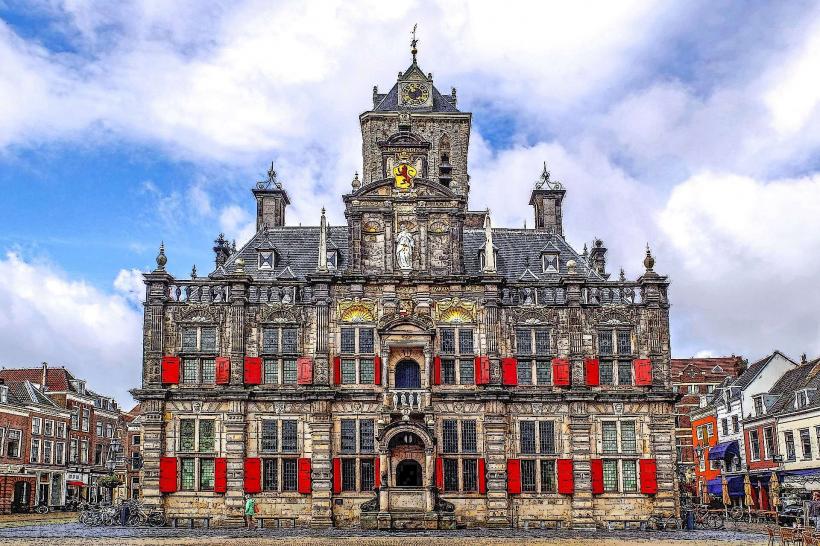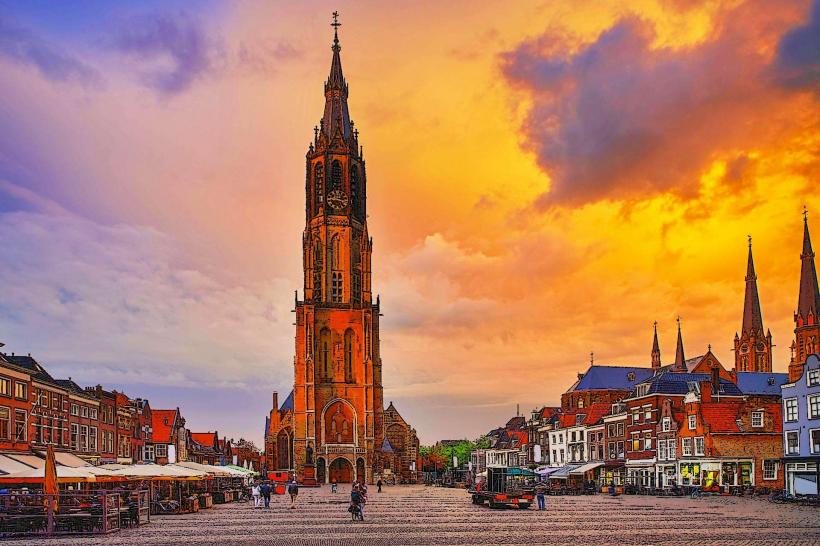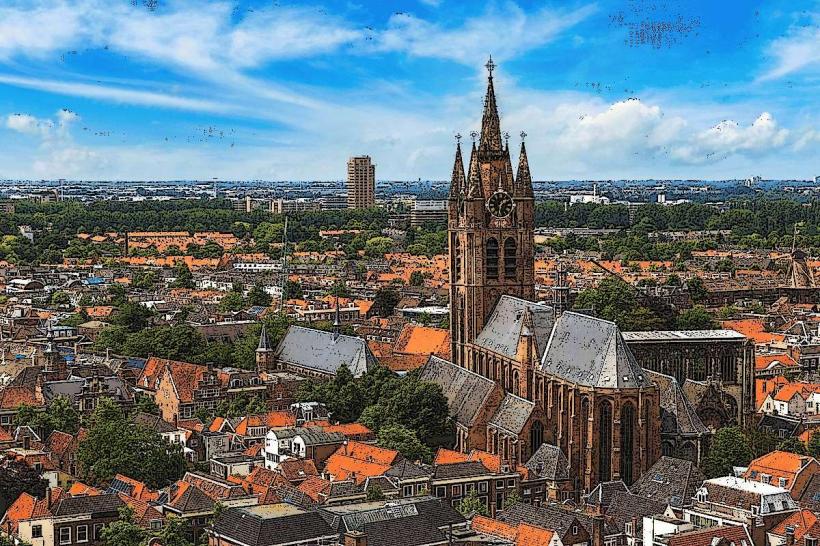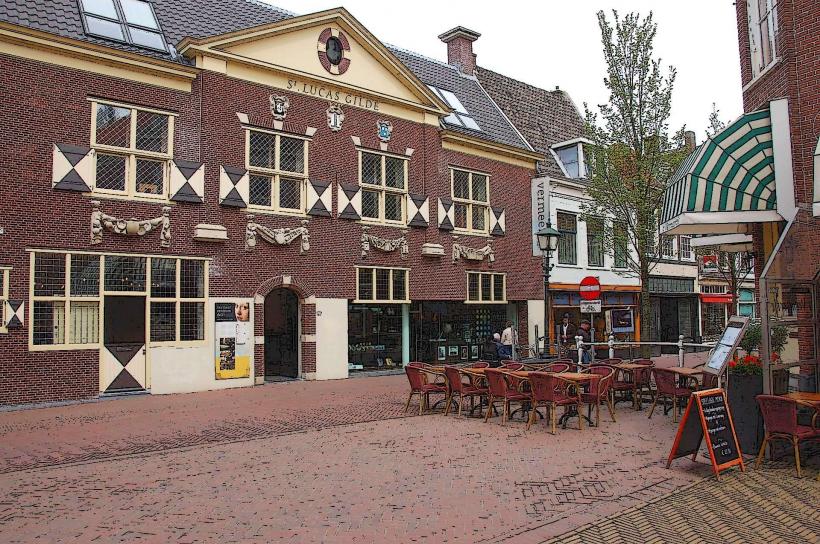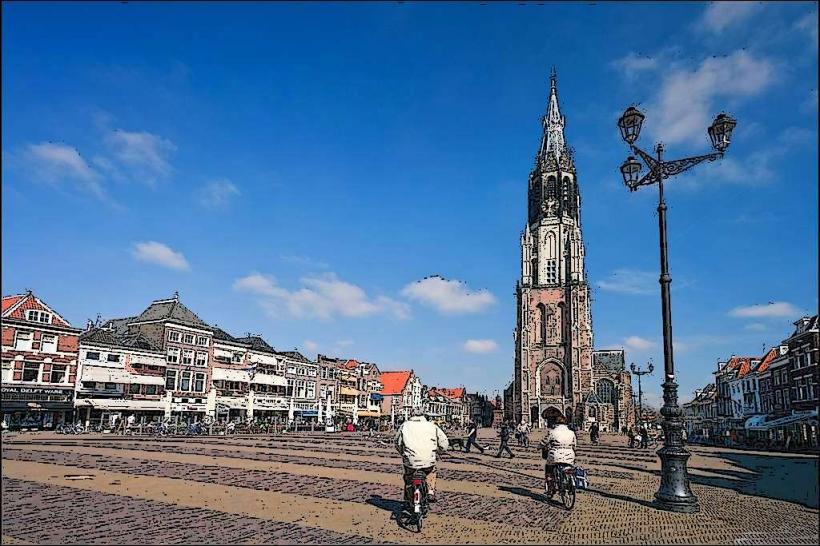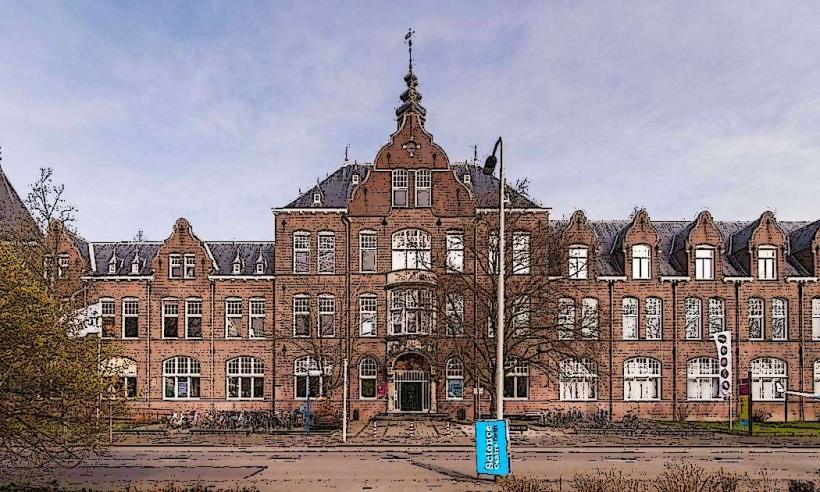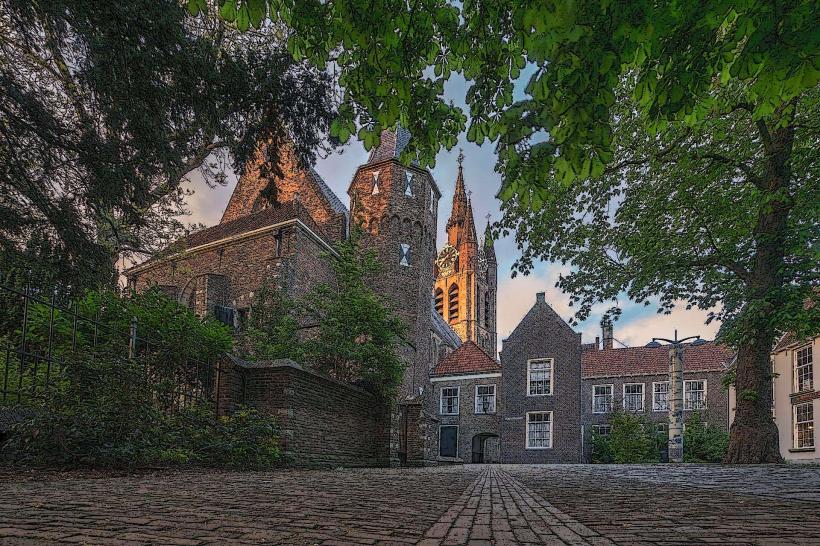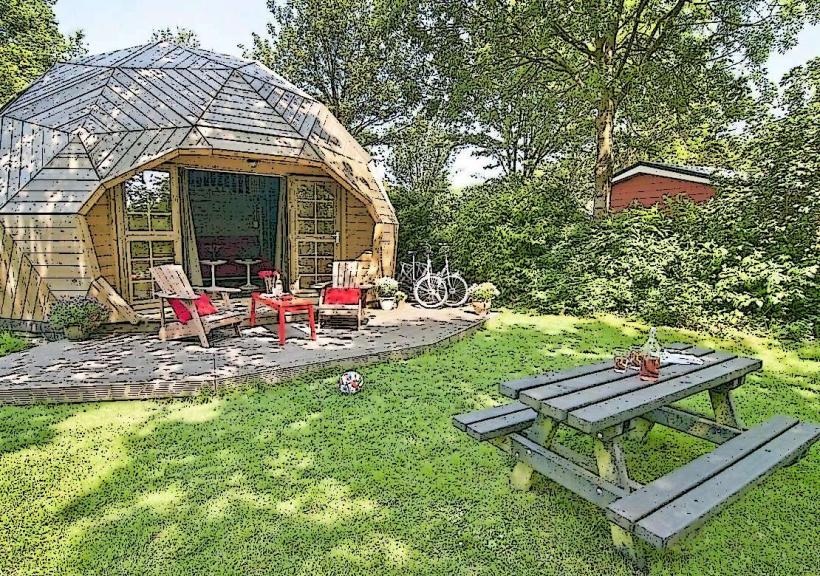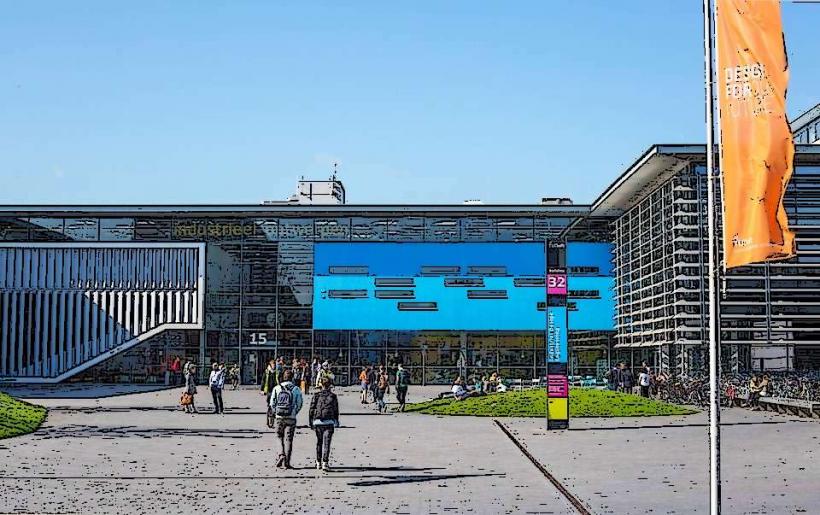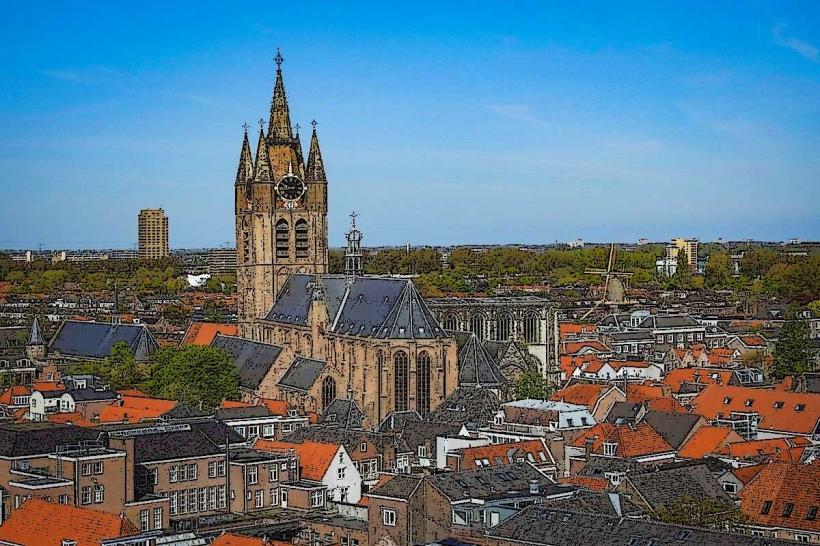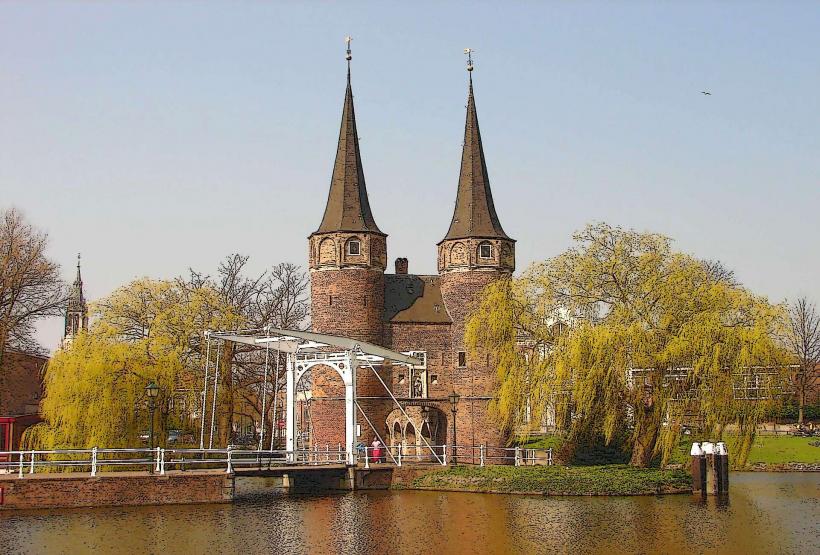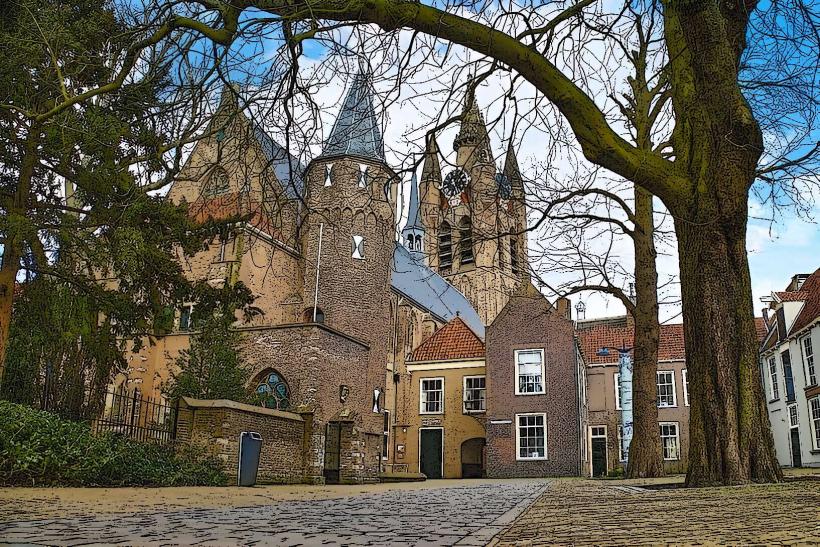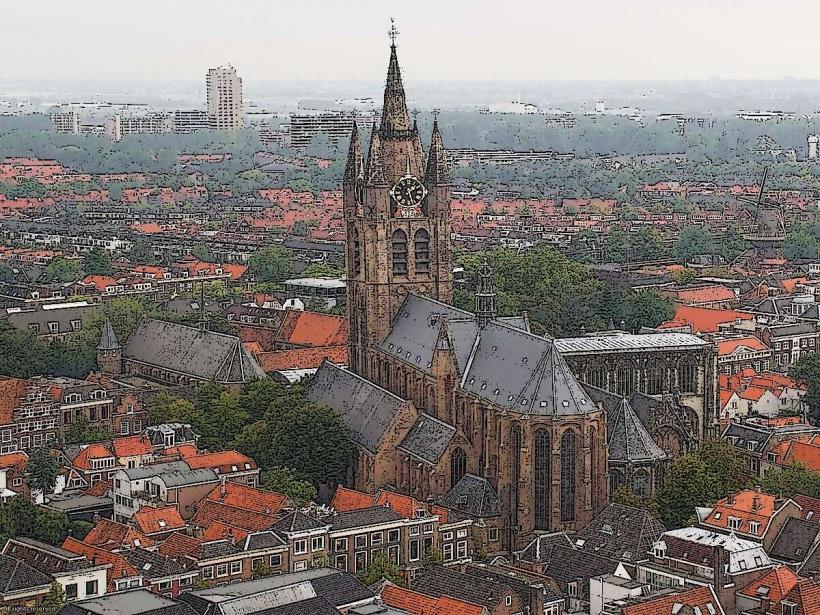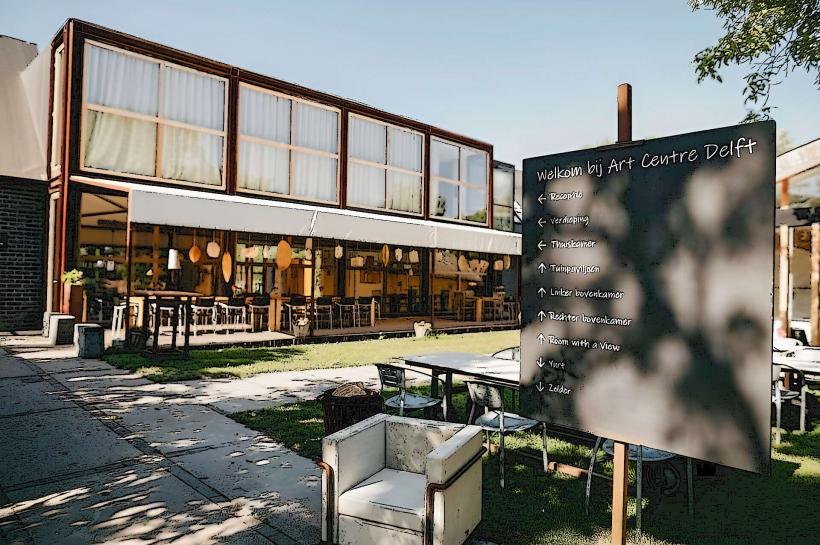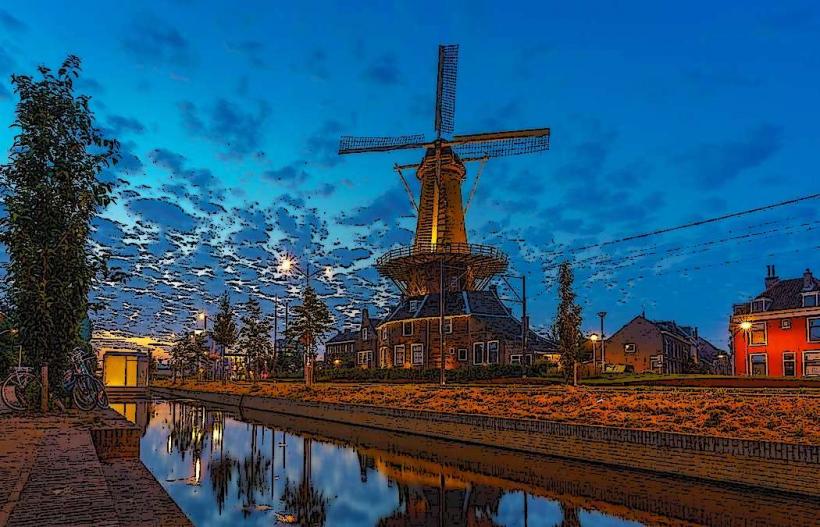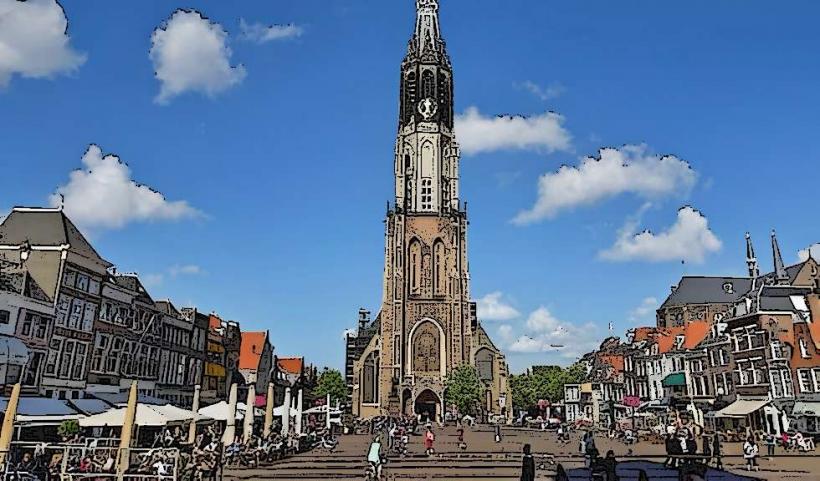Information
Landmark: Delft Pottery FactoryCity: Delft
Country: Netherlands
Continent: Europe
The Delft Pottery Factory, also known as Royal Delft or De Koninklijke Porceleyne Fles, is the oldest and most renowned producer of Delftware, the iconic blue-and-white pottery that is closely associated with the city of Delft in the Netherlands. This world-famous pottery has been produced in Delft since the 17th century, and the factory continues to operate today, making it a significant cultural and historical site for visitors.
Overview of the Delft Pottery Factory
- Name: Royal Delft (De Koninklijke Porceleyne Fles).
- Location: Situated in Delft, the factory is located in a former industrial complex on the Rotterdamseweg, not far from the city center.
- Founded: The factory was founded in 1653, making it one of the oldest producers of Delftware still in operation.
- Royal Status: In 1919, the factory was granted the title of Royal (Koninklijk) by the Dutch royal family, recognizing its high-quality craftsmanship and significant contribution to Dutch cultural heritage.
History of Delft Pottery
The origins of Delftware date back to the late 16th century, when Dutch potters began creating their own version of imported Chinese porcelain, which was highly prized in Europe. Delft, with its strategic location and access to international trade routes, became a hub for the production of pottery that imitated Chinese blue-and-white porcelain.
Early Development (16th-17th Century)
- The Dutch East India Company (VOC) played a crucial role in introducing Chinese porcelain to the Netherlands, which inspired local potters to replicate the technique.
- The first Delftware pottery factories appeared in the late 1500s and early 1600s, and by the 17th century, Delft had become the center for the production of this style of pottery in Europe.
- Early Delftware pieces were often decorated with blue floral motifs and oriental designs, but over time, the style became more European, with motifs inspired by Dutch landscapes, biblical scenes, and daily life.
Royal Delft and the Golden Age
- Royal Delft (De Koninklijke Porceleyne Fles) was established in 1653 and is the most prominent surviving factory from this golden age of Delftware.
- During the Dutch Golden Age, Delftware was highly sought after, both in Europe and abroad. It became a status symbol among the wealthy Dutch, and pieces from the Royal Delft factory were considered the finest examples of Dutch craftsmanship.
- The factory gained prominence under the leadership of Adrianus Kocx, who contributed to refining techniques and increasing production.
Delftware: Characteristics and Techniques
Delftware is known for its blue-and-white design, where a white tin-glazed earthenware base is decorated with cobalt blue pigments. The classic style is reminiscent of Chinese porcelain, but with a distinctly Dutch flair.
- Material: Delftware is made from earthenware, a type of clay that is fired at relatively low temperatures. After shaping, the pottery is coated with a tin-glaze, which gives it its signature white background.
- Decoration: The pottery is hand-painted with blue cobalt pigment to create intricate designs. The designs often feature floral patterns, landscapes, animal motifs, and historical scenes.
- Glazing: The pottery is glazed to achieve a glossy, smooth finish, which is typical of Delftware. The glaze also helps to seal the pottery and create its durable, porcelain-like appearance.
Royal Delft Pottery Factory Today
The Royal Delft factory is still producing Delftware to this day, continuing the tradition of craftsmanship that has been passed down for centuries. The factory offers visitors the opportunity to learn about the art of Delft pottery, see the production process firsthand, and purchase authentic Delftware pieces.
Key Features of the Modern Royal Delft Factory
Guided Tours and Demonstrations:
- The factory offers guided tours where visitors can watch artisans at work. These artisans continue to hand-paint intricate blue-and-white designs on pottery, using traditional methods that have been passed down through generations.
- Visitors can also watch the decorative painting process, where skilled painters apply the delicate blue designs using brushes and cobalt pigments.
Museum Exhibits:
- The Royal Delft Museum showcases the history of the factory and the development of Delftware over the centuries. The museum houses an impressive collection of historic Delftware pieces, including rare and antique pottery, some dating back to the 17th century.
- The museum also features artifacts related to the factory’s history, including old molds, tools, and documents that illustrate the evolution of Delftware.
Workshops and Experiences:
- Visitors can participate in workshops, where they can try their hand at painting their own Delftware under the guidance of skilled artisans.
- The factory also offers interactive exhibits where guests can learn more about the traditional techniques of painting and glazing that make Delftware unique.
Retail Store:
- The Royal Delft factory shop offers a wide selection of authentic Delftware for sale, ranging from traditional blue-and-white pottery to more modern interpretations. These include vases, plates, tiles, and figurines, as well as limited-edition pieces that commemorate special events or anniversaries.
Architectural Significance:
- The Royal Delft Factory is housed in a historic building that reflects its long history. The factory complex includes several buildings where different stages of the pottery-making process occur, from molding and firing to decoration.
- The factory also has a traditional Dutch courtyard, where visitors can enjoy the peaceful atmosphere and learn more about the factory’s long-standing connection to Delft’s history.
Cultural and Economic Impact
- Symbol of Dutch Craftsmanship: Delftware is a symbol of the Netherlands' rich artistic and cultural heritage, and Royal Delft remains one of the last remaining factories producing authentic hand-painted Delftware.
- Tourism: The Royal Delft factory is a major tourist attraction in Delft, drawing thousands of visitors each year who want to explore the process behind the iconic pottery and learn about its historical significance.
- Art and Design: Today, Delftware continues to inspire contemporary designers and artists, with modern versions of the pottery style being produced for both functional and decorative purposes.
Conclusion
The Delft Pottery Factory, or Royal Delft, stands as a living testament to the craftsmanship and rich history of Delftware. From its humble beginnings in the 17th century to its modern-day status as a cultural institution, the factory continues to produce some of the finest pottery in the world. A visit to the Royal Delft factory is not only a chance to explore the art of Delftware but also an opportunity to delve into the history and cultural significance of one of the Netherlands' most iconic products. Whether you're a lover of art, history, or craftsmanship, a visit to the Delft Pottery Factory offers a memorable experience.

